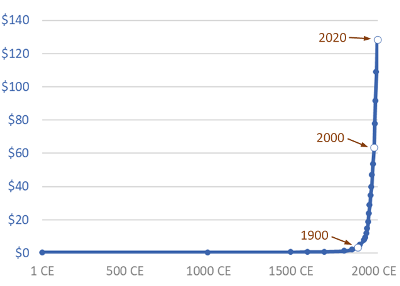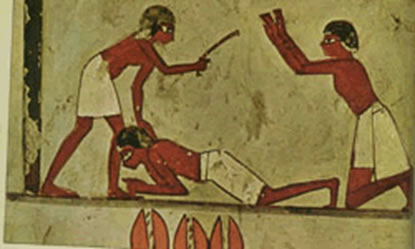This interesting infographics ‘the richest people in history‘ reminds us that throughout most of our human history, the Agricultural Age, the richest people have been the kings, emperors and rulers of vast areas of land. Then, in the 15th century onwards (the start of the Industrial Age) came the time of bankers and merchants.

The infographic does not go as far, but of course from the 15th century, accelerating into the 19th century, the richest people started to be industrialists and bankers financing new machines and infrastructures. And now, they are industrialists of the economy. Still their wealth is much less than the historical rulers mentioned in the infographic whose wealth could be up to 20% of world GDP – which shows that in a certain measure richer people are now much less proportionally rich than historical figures.
The other interesting transformation to note is that up to the 15th century, wealth was derived regionally and mostly within one’s borders. Then trade spread and fortunes were made on this basis. In the 20th century it started to become truly global, and now it is definitely mostly global for the richest people on earth. Thus the geographical basis of wealth has also significantly changed.
It is often interesting to take such as historical perspective to remind ourselves that what we observe today is the result of a long evolution. Wealth is now not an exclusive property of tyrannical rulers, or industrialists but the domain of businesspeople with global interests that move resolutely into the Collaborative Age.






